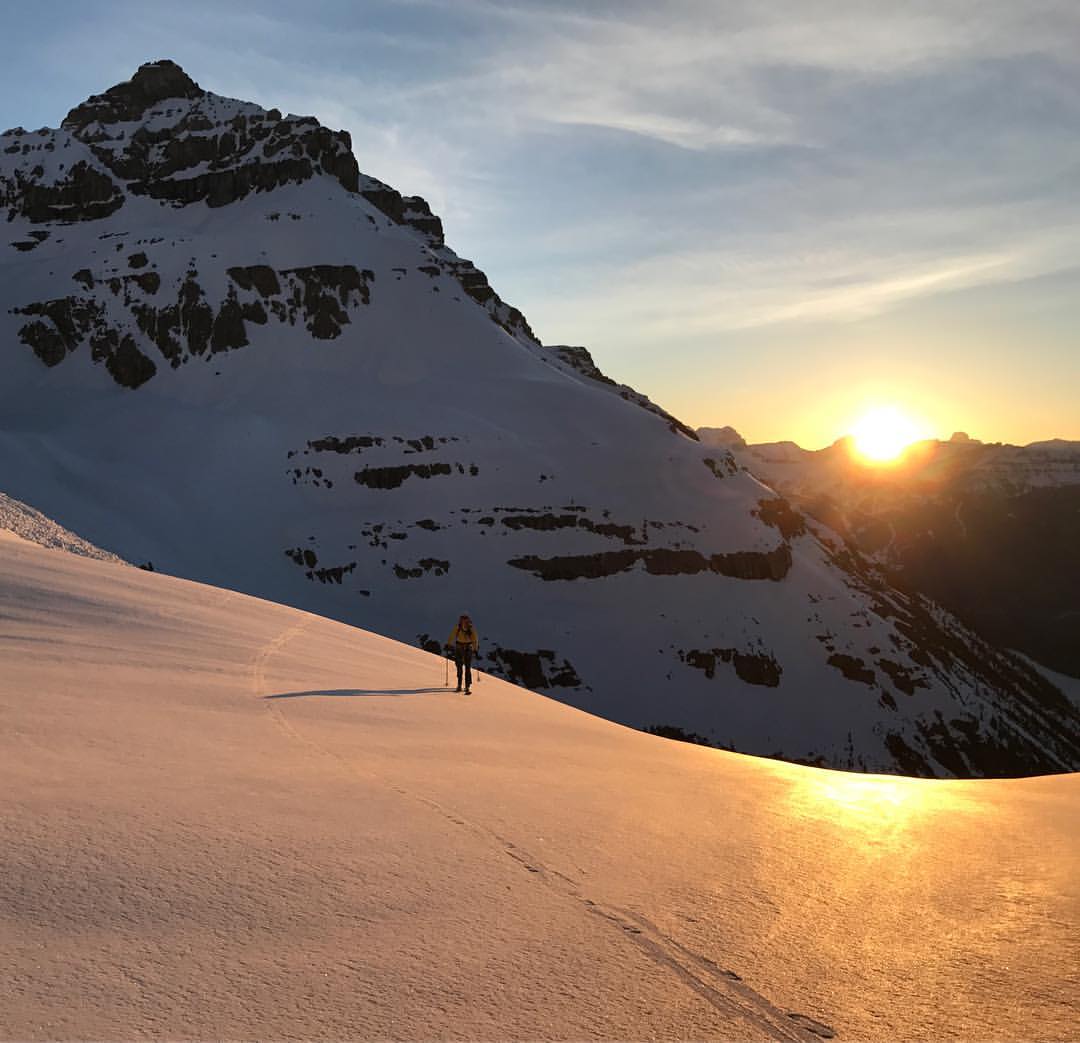Order over $100 and get Free shipping in Canada
Free shipping Across Canada On Orders Over $100

Overnight freeze, solar radiation, wet slabs, etc.
As a skier in the Rockies, I'm far more used to hearing about deep persistent slabs, wind loading and facets. With this Spring's skiing season seeming to last forever, I realized how little I knew about those Spring-only terms. Then I found myself bailing off a few awesome runs because of marginal overnight freezes (weekend warrior problems...) and spooky snow conditions and I realized that I didn't know anything about Spring skiing...
After looking through a few avalanche safety manuals I asked the Google about all that and I found this short but quite thorough article on the subject. I thought it might come in handy, so here it is:
Terrain & Aspect: Typically, wet snow avalanches (primarily loose, wet avalanches) being earlier in the day on southerly aspects due to the impact of solar radiation. This type of instability then moves to east, west and potentially north facing slopes as the day progresses. Using different aspects to your advantage is a great way to enjoy spring riding conditions and avoid rising instability. However, changing aspect isn’t always a sure fire way to avoid unstable conditions. There are numerous factors that influence snowpack stability during the springtime.
1) Temperature: As temperatures warm above freezing, surface layers of the snowpack begin to melt. If temperatures drop below freezing, this process is slowed, allowing the snowpack to adjust to these changes. However, if temperatures stay above freezing for an extended period of time (multiple days in a row), a large influx of free moving water can be introduced into the snowpack. This can create widespread instability and dangerous avalanche conditions. The first prolonged period of above freezing temperatures (both day and night) is a common time for spring avalanches to occur. If temperatures stay above freezing for an extended period of time, the snowpack can become isothermal. This is when the temperature of the entire snowpack reaches zero degrees Celsius. When the snowpack becomes isothermal, the structural integrity of the pack begins to break down, making wet snow avalanches likely. Typically during spring skiing, it’s best to get an early start when the snowpack is frozen and stable and be off the slopes by the heat of the day.
2) Wind: Wind can turn very safe snow into very dangerous snow in a matter of minutes. Wind is usually the most important weather factor in avalanche accidents. Wind erodes snow from the windward (upwind) side of obstacles, such as a ridge and deposits the same snow on the leeward (downwind) terrain. Wind loading is a common denominator in most avalanche accidents. And it’s no wonder because wind can deposit snow ten times more rapidly than snow falling from the sky. Moreover, wind-drifted snow is ground up by bouncing along the snow surface and when it comes to rest it’s often much denser than non-windloaded snow. In other words, it not only adds significant weight on top of buried weak layers but it forms a slab that can propagate a fracture very easily. Cornices that have built up on the leeward sides of ridges over the winter tend to be very large by springtime–and they can weaken with warming temps.
3) Snowpack Structure: A major contributing factor to springtime avalanches, particularly wet slab avalanches, is the presence of buried persistent weak layers. Persistent weak layers (PWL) include depth hoar, surface hoar and near surface facets. The presence of PWL can produce dangerous avalanche conditions months after these layers form and get buried. Depth hoar (faceted snow near the ground) is the most notorious weak layer for producing large wet slab avalanches.
4) A common avalanche during warm spring weather is wet loose avalanches or sluffs. This form of avalanche is typically less dangerous than wet slabs. However, wet loose avalanches can entrain large volumes of snow capable of carrying and sometimes burying a skier or rider. Wet loose avalanches generally start at a single point, but fan out as they move downhill. In steep terrain, wet loose avalanches can travel long distances and pick up significant volume and speed–and send you into dangerous terrain features like cliffs, trees, and gullies. During the right conditions, this type of avalanche can also travel into lower angle or flat terrain, where you might think you’re safe. Wet snow avalanches in the spring typically occur during prolonged periods of warm and dry weather. This is generally the opposite of mid-winter avalanches which tend to occur after heavy periods of snowfall. If you’re planning on spring riding, it’s important to pay attention to changing snowpack and weather conditions.
Eric Knoff’s “Spring in the Backcountry: A Look at Late Season Snow Conditions”
See you on the hills! Looks like the backcountry is not closed yet...
{"one"=>"Select 2 or 3 items to compare", "other"=>"{{ count }} of 3 items selected"}